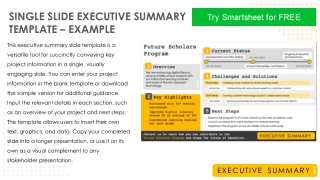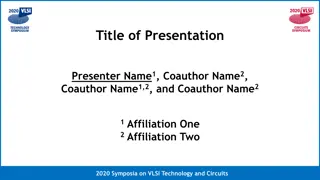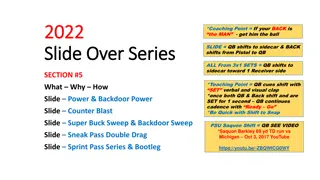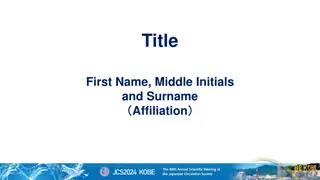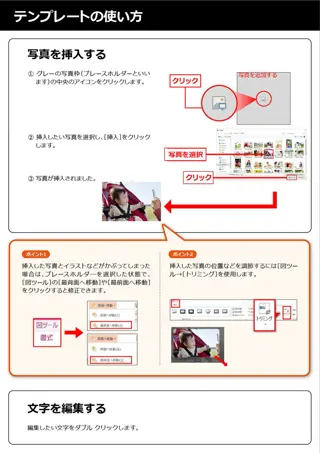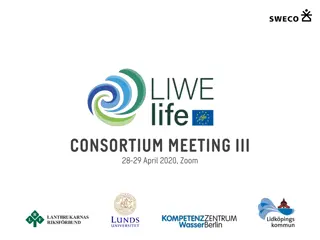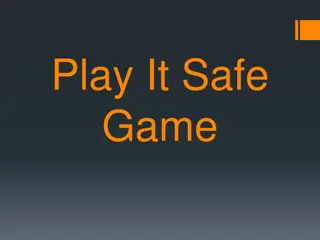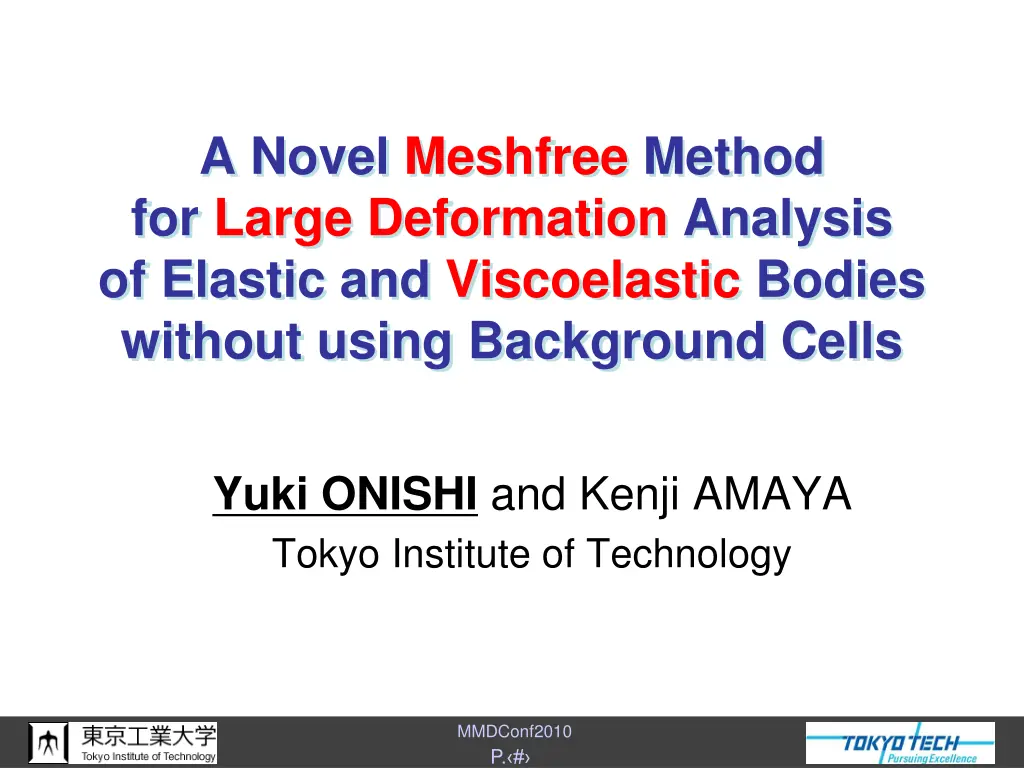
Meshfree Method for Large Deformation Analysis without Background Cells
"Explore a novel meshfree method for analyzing large deformations in elastic and viscoelastic bodies without utilizing background cells. The research presents an innovative approach for optimization in thermal nanoimprint processes, highlighting the development of a robust meshfree formulation. Discover cutting-edge techniques and models for viscoelastic analysis in this comprehensive study."
Download Presentation

Please find below an Image/Link to download the presentation.
The content on the website is provided AS IS for your information and personal use only. It may not be sold, licensed, or shared on other websites without obtaining consent from the author. If you encounter any issues during the download, it is possible that the publisher has removed the file from their server.
You are allowed to download the files provided on this website for personal or commercial use, subject to the condition that they are used lawfully. All files are the property of their respective owners.
The content on the website is provided AS IS for your information and personal use only. It may not be sold, licensed, or shared on other websites without obtaining consent from the author.
E N D
Presentation Transcript
A Novel Meshfree Method for Large Deformation Analysis of Elastic and Viscoelastic Bodies without using Background Cells Yuki ONISHI and Kenji AMAYA Tokyo Institute of Technology MMDConf2010 P. #
Background After the advent of nanoimprinting, micro hot embossing and thermal nanoimprinting have been in area of active research. Pressing patterned mold onto polymer or glass to transcribe the pattern. Better precision than photo lithography A mechanical process Experiments cost high! Goal Establishment of numerical technique for thermal nanoimprint process optimization. J.W.Lee et al., EIPBN (2007) MMDConf2010 P. #
Our Previous Work Finite element Analysis Geometric nonlinear (Large deformation) Material nonlinear rigid mold and viscoelastic polymer) Contact nonlinear Quasi-static analysis Mold rigid Polymer (viscoelastic) FE analyses agreed with experiments in case of line-and-space up to AR=1 Onishi et al., JVST B (2008) etc. MMDConf2010 P. #
Our Previous Work MMDConf2010 P. #
Objective Our previous work was incomplete In practical applications, AR over 1 is not uncommon. (even AR>3 is usual.) FEM cannot treat the extremely large deformation without adaptive meshing. (Adaptive meshing is difficult to implement.) Objective Development of a meshfree method for viscoelastic large deformation analysis (utilize it for thermal nanoimprint process optimization in the future) MMDConf2010 P. #
Proposing Meshfree Formulation [4 Points] 1. Quasi-static analysis for viscoelastic body 2. Modified stress-point integration 3. Robust moving least squares (Robust MLS) with integration correction 4. Quasi-implicit time advancing MMDConf2010 P. #
1. Viscoelastic Model Standard solid model in shear (the simplest generalized Maxwell model) Schematic diagram G long-term shear modulus G0 instantaneous shear modulus g dimensionless shear modulus relaxation time On the other hand, bulk modulus, K, is a constant. Constitutive equation T:Cauchy stress, Evol logarithmic volumetric strain E logarithmic deviatoric strain, Ev logarithmic viscous strain MMDConf2010 P. #
1. Viscoelastic Model material constants used in example analysis instantaneous Young s modulus E0 9 GPa instantaneous Poisson s ratio 0 0.333 instantaneous shear modulus G0 3.375 GPa bulk modulus K 9 GPa dimensionless shear modulus g 0.9 relaxation time 5 s long-term Young s modulus E 1 GPa long-term Poission s ratio 0.481 long-term shear modulus(G ): 0.3375 GPa MMDConf2010 P. #
2. Modified SP Integration Meshfree domain integration with BG cells is not suitable for large deformation. There are 2 ways of domain integration without BG cells. [1] Nodal integration (J. S. Chen) merit) very simple. generation of stress-points is not necessary. demerit) zero-energy mode arise without artificial stabilization. (similar to hour-glass modes in FEM) [2] Stress-point (SP) integration (T. Belytschko) merit) artificial stabilization is not essential. demerit) generation and translation of stress-points are required. No practical SP integration scheme for large deformation analysis was developed so far. We introduce a SP integration modified for large deformation analysis. MMDConf2010 P. #
2. Modified SP Integration (initialization) (currently) SPs are generated from FE meshes [Note] meshes are only for initialization!!! Locate every SP in the middle edges (Belytschko s SP integration has master and slave SPs.) Corresponding SP volume is calculated with meshes node (has only x and u) stress point (SP) (has x, T, E, Ev, etc.) MMDConf2010 P. #
2. Modified SP Integration (updates) Location x: current location, S: set of nodes in the support, : shape function Volume Vinitial initial volume F deformation gradient MMDConf2010 P. #
3. Robust MLS (approximation) Weight function not bell shape but mountain shape Support radius (small) IR IR IR MMDConf2010 P. #
3. Robust MLS (integration correction) Integration constraint n: outward normal unit vector, A: correspoiding nodal area JS: set of SPs that include node J in the support Integration correction (IC) determine s so that modified s satisfy reproducing constraints including integration constraint MMDConf2010 P. #
4. Quasi-implicit Time Advancing Start of time increment loop Typical fully-implicit time advancing Start of Newton-Raphson loop update support, w, , etc. calc f int.and K calc r = f int.-fext. solve K u = r update node locations update SP locations End of Newton-Raphson loop End of time increment loop MMDConf2010 P. #
4. Quasi-implicit Time Advancing Start of time increment loop update support, w, , etc. renew fvirtual Start of Newton-Raphson loop update support, w, , etc. calc f int.and K calc r = f int.-fext.-fvirtual solve K u = r update node locations update SP locations End of Newton-Raphson loop End of time increment loop Constant shape function in each Newton-Raphson loop Enforcement of temporal continuity of the mechanical equilibrium MMDConf2010 P. #
Patch Test node stress point (SP) Elastic body, Static, Plane-strain Irregularly-arranged nodes and SPs Displacement BC for every external nodes MMDConf2010 P. #
Patch Test (animation) MMDConf2010 P. #
Patch Test (result) within 1% error of Mises stress Proposed method passes the patch test MMDConf2010 P. #
Bending of Cantilever Force 200 kN Time 1s 100s 0.1m Elastic/Viscoelastic body 1m Static/Quasi-static, Plane strain 50x5 structured grid nodes Concentrated force at right-top node Compared to FEM(ABAQUS/Standard) with same node arrangements and selective reduced integration quadrangle elements MMDConf2010 P. #
Bending of Cantilever (elastic) E=1GPa, =0.481 ABAQUS/Standard Proposed Method Less than 1% error of displacement No problem in elastic large deflection analysis MMDConf2010 P. #
Bending of Cantilever (viscoelastic) ABAQUS/Standard Proposed Method MMDConf2010 P. #
Bending of Cantilever (viscoelastic) 2.5% error of displacement Error decreases as dt decreases Further improvement of time-advancing scheme is necessary MMDConf2010 P. #
Imprinting-like Analysis Quasi-static, plane strain Horizontal bounding for left and right side Vertical bounding for bottom side Enforced displacement for right half of top side toward downward with horizontal bounding Unstructured grid with fineness and coarseness 0.5m disp. in 100s 1m 1m MMDConf2010 P. #
Imprinting-like Analysis (FEM) Inappropriate deformation because of the locking under the corner MMDConf2010 P. #
Imprinting-like Analysis (FEM) MMDConf2010 P. #
Imprinting-like Analysis (animation) An appropriate result was obtained. MMDConf2010 P. #
Summary & Future Work Summary A Meshfree formulation of large deformation of viscoelastic body without BG cells was proposed. It passes the patch test. It has fair accuracy in large deflation analysis. Appropriate result is obtained in imprinting-like analysis. Further modification is required to apply it to thermal nanoimprint simulation. Future work Improvement of time advancing scheme Verification with experiments or FEM with adaptive meshing Insertion of additional nodes and SPs during analysis Contact analysis MMDConf2010 P. #


